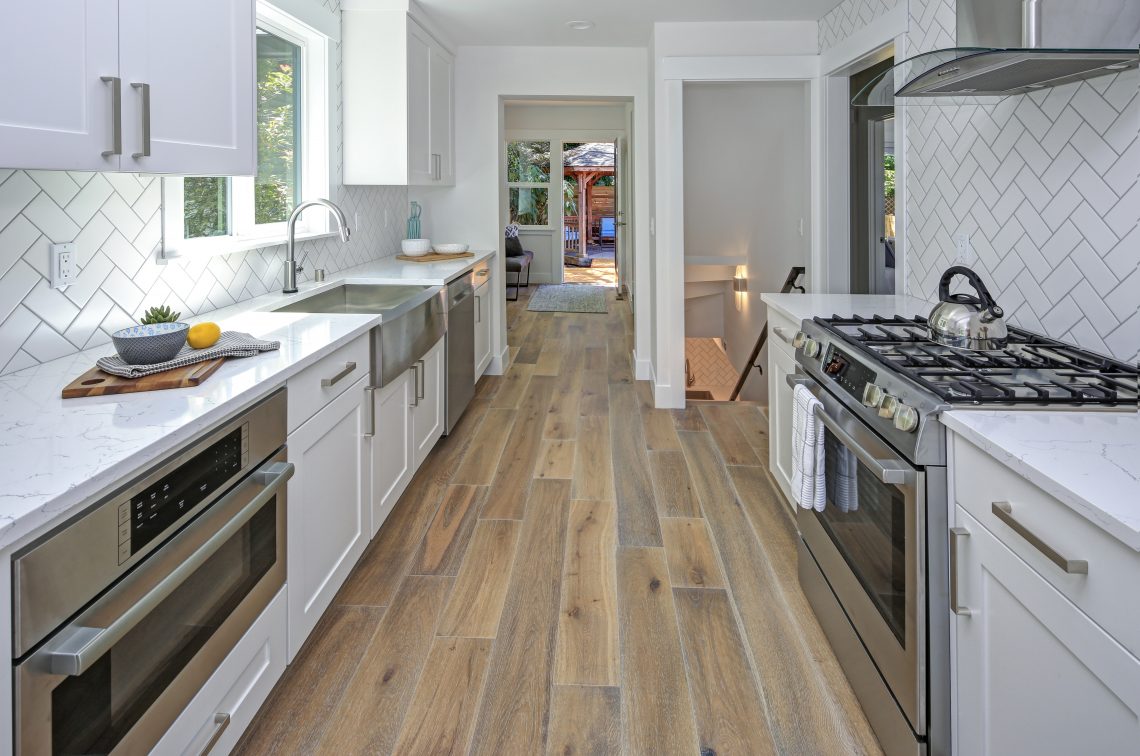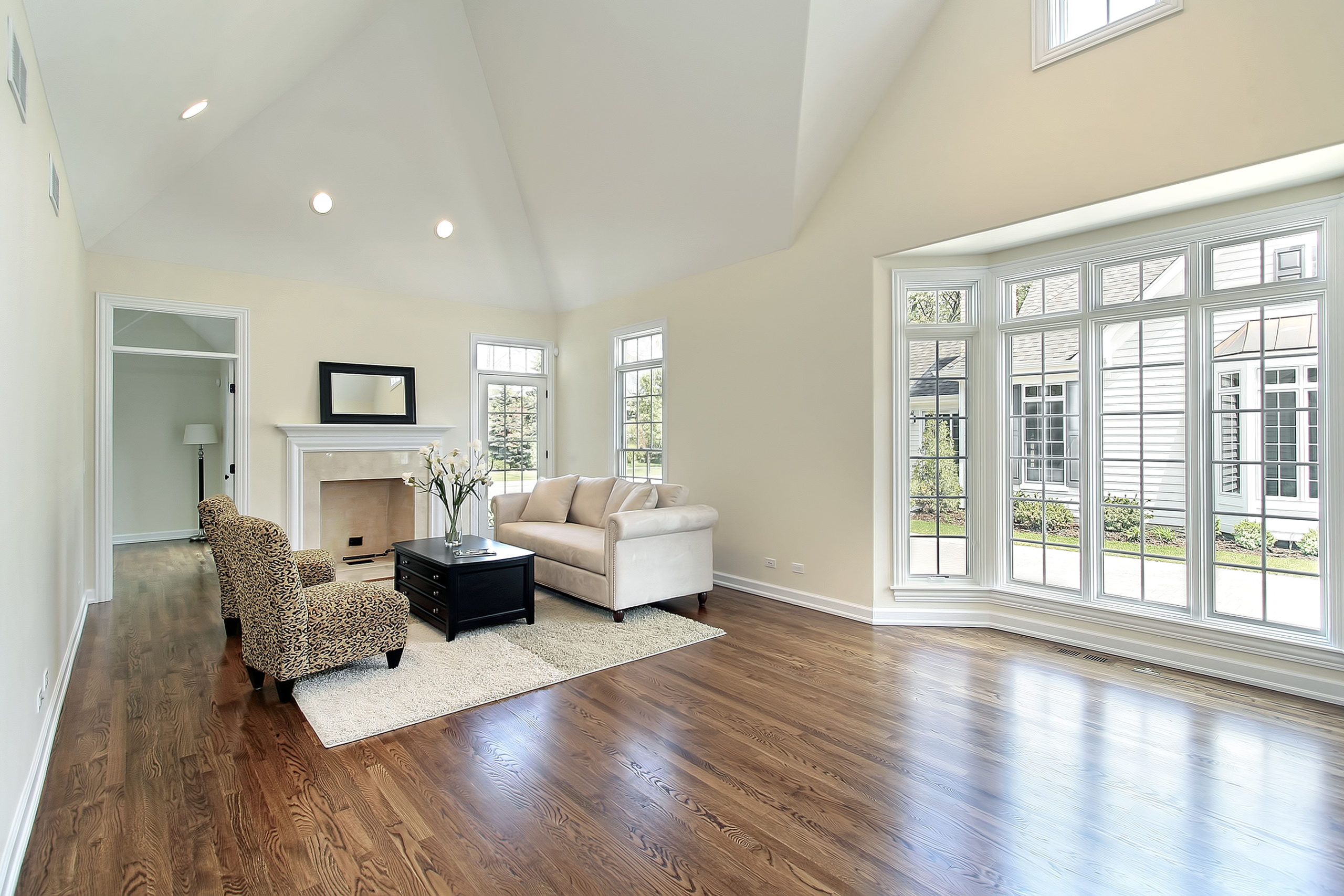
Wide-Plank Hardwood Flooring
Wide Plank hardwood flooring exudes elegance. Where wide planked flooring is installed, it’s often one of the first things a person notices when walking into a room; it very easily acts as a focal point. It’s hard not to miss such a beautiful floor when it spans the course of an entire room. But more so than the adoring cosmetic quality, wide plank hardwood bears a craftmanship appeal to it as well. Wide plank flooring isn’t as common as the standard strip flooring, here in the northeast United States. When a wide plank hardwood floor is installed in a home or business, you can be sure that a certain level of dedication and craftsmanship went into choosing, creating, installing and finishing the floor.
What is considered wide plank hardwood?
So you may be asking, what is considered “wide plank hardwood?” Unlike 2 1/4” and 3 1/4” hardwood flooring, which is most often referred to as strip flooring, wide plank hardwood is usually considered 5” wide and above. Most industry professionals classify 4” as a strip floor while many homeowners find 4” to be that happy medium of a wide plank floor, while not being too wide.
Wide plank hardwood however, comes in MUCH wider planks. Many manufacturers will mill 6”, 7” ,8”, 9” and 10”. Many can mill the flooring as wide as 12”-24”. Typically, anything above 5” tends to be a special order that is custom made to spec for each particular customer. So if you’re looking to add something special to your home, having a wide plank hardwood floor custom-milled for your home is definitely one way to go.
Some great aesthetic features of wide plank hardwood
While being super trendy, wide plank hardwood holds a classic style. When you think back to colonial America, hardwood floors may pop into your mind, and rightfully so. But they weren’t the same as today’s tongue and groove strip floors. They were wide, thick planks cut from the continent’s abundant old-growth forests. Because of the age of the trees in these forests, and massive diameter, the heartwood (the wood taken from the inner portion of the tree) was extremely tight-grained, making the lumber harder and more durable than the relatively immature wood of the same species that is harvested today. That is the reason why some of those old hardwood floors, dating back to the early 18th century, still exist in old-colonial homes today. Choosing to install a wide plank hardwood floor in your home, can certainly bring a high-end/old-world feel.
Wide plank wood tends to make the rooms look and feel larger. No matter how big the space, the more seams shown on a floor, the busier the space looks, making a room actually feel smaller and cluttered. Wide-planks offer much fewer seams, leaving you with the natural look and beauty of the actual wood and its graining, instead of busy lines.
You can mix and match wide planks with strip planks for a custom look. The use of varying width floor planks date back to the 18th century, where it was common to alternate wide planks of Walnut hardwood and more narrow planks of Maple. Historically, the creation of a varying width floor was mainly for the purpose of utilizing all of the tree’s lumber in the most efficient way possible. Today, it is a sought after style choice that can give any home a unique look.
Technical Feature of wide plank hardwood
- As recommended for all solid hardwood floors, subfloors MUST be at least 3/4” thick, ensuring a proper installation.
- Wide-plank flooring must acclimate longer than strip flooring. Each species of hardwood tends to have different acclimation specs, but the wider the plank the longer the acclimation period. Wide plank floors need to acclimate completely, to the environment they’re going to be installed in because the wider the plank is, the more moisture it has the ability to hold. So on the journey from the lumber yard, to the mill, to the distributor, to your home, your wide-plank flooring is in a number of different environments, with varying temperatures and more importantly, humidity levels. To ensure your wide plank flooring doesn’t shrink or buckle after it’s installed, allowing for proper acclimation time is extremely important.
- Any flooring over 4” MUST be both glued and stapled. As an industry standard, the wider the plank, the higher the percentage of adhesive coverage is needed during installation.
- You can purchase just about any wood species in a wide plank. From domestic hardwoods like Oak and Maple, to beautiful exotics like Brazilian Teak and Acacia. It really depends on the availability and resources that the mills have.
- One key feature of wide plank flooring is their graining pattern. With strip flooring, you see the grains of the wood on a significantly smaller level. However, with wide plank hardwoods, you are able to see all the beautiful characteristics of the lumber in it’s most natural form; like where the inner core of the heartwood meets the outer sapwood, showing unique color variation; details like these are just a part of what makes a wide plank wood floor so appealing.
As always, please reach out to info@theflooringblog.com or theflooringblog@gmail.com for any questions or concerns you may have. Feel free to share this post on your social media sites!
*Lisa



47 Comments
Pingback:
Pingback:
Pingback:
Pingback:
Pingback:
Pingback:
Pingback:
Pingback:
Pingback:
Pingback:
Pingback:
Pingback:
Pingback:
Pingback:
Pingback:
Pingback:
Pingback:
Pingback:
Pingback:
Pingback:
Pingback:
Pingback:
Pingback:
Pingback:
Pingback:
Pingback:
Pingback:
Pingback:
Pingback:
Pingback:
Pingback:
Pingback:
Pingback:
Pingback:
Pingback:
Pingback:
Pingback:
Pingback:
Pingback:
Pingback:
Pingback:
Pingback:
Pingback:
Pingback:
Pingback:
Pingback:
Pingback: